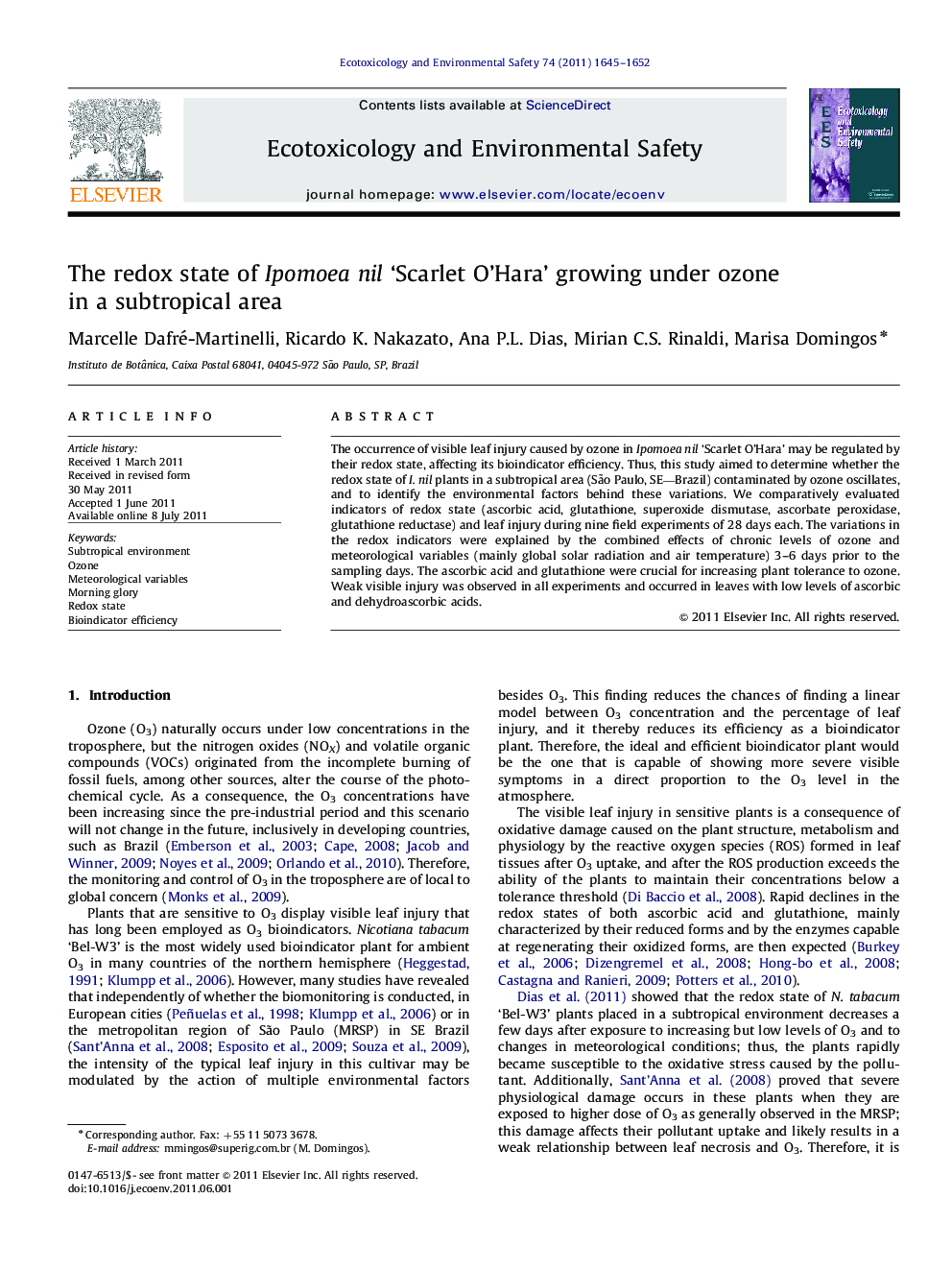| Article ID | Journal | Published Year | Pages | File Type |
|---|---|---|---|---|
| 4421098 | Ecotoxicology and Environmental Safety | 2011 | 8 Pages |
The occurrence of visible leaf injury caused by ozone in Ipomoea nil ‘Scarlet O’Hara’ may be regulated by their redox state, affecting its bioindicator efficiency. Thus, this study aimed to determine whether the redox state of I. nil plants in a subtropical area (São Paulo, SE—Brazil) contaminated by ozone oscillates, and to identify the environmental factors behind these variations. We comparatively evaluated indicators of redox state (ascorbic acid, glutathione, superoxide dismutase, ascorbate peroxidase, glutathione reductase) and leaf injury during nine field experiments of 28 days each. The variations in the redox indicators were explained by the combined effects of chronic levels of ozone and meteorological variables (mainly global solar radiation and air temperature) 3–6 days prior to the sampling days. The ascorbic acid and glutathione were crucial for increasing plant tolerance to ozone. Weak visible injury was observed in all experiments and occurred in leaves with low levels of ascorbic and dehydroascorbic acids.
► I. nil ‘Scarlet O’Hara’ is potentially a bioindicator of O3 in the subtropics. ► It is still unknown if its redox state would affect the bioindicator efficiency. ► The redox state of ascorbic acid was crucial for increasing plant tolerance. ► Higher redox capacity of ascorbic acid occurred at the expense of glutathione. ► Its bioindicator efficiency is lower under chronic levels of O3 in the tropics.
